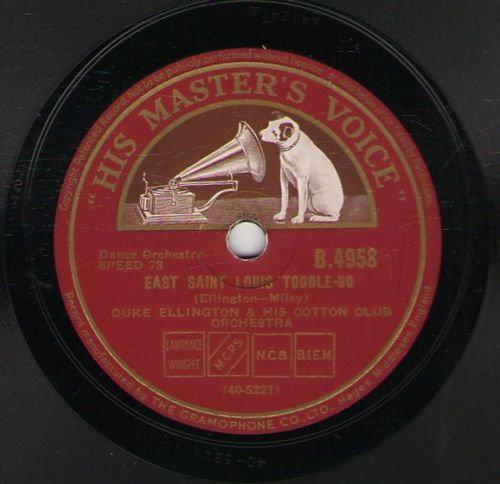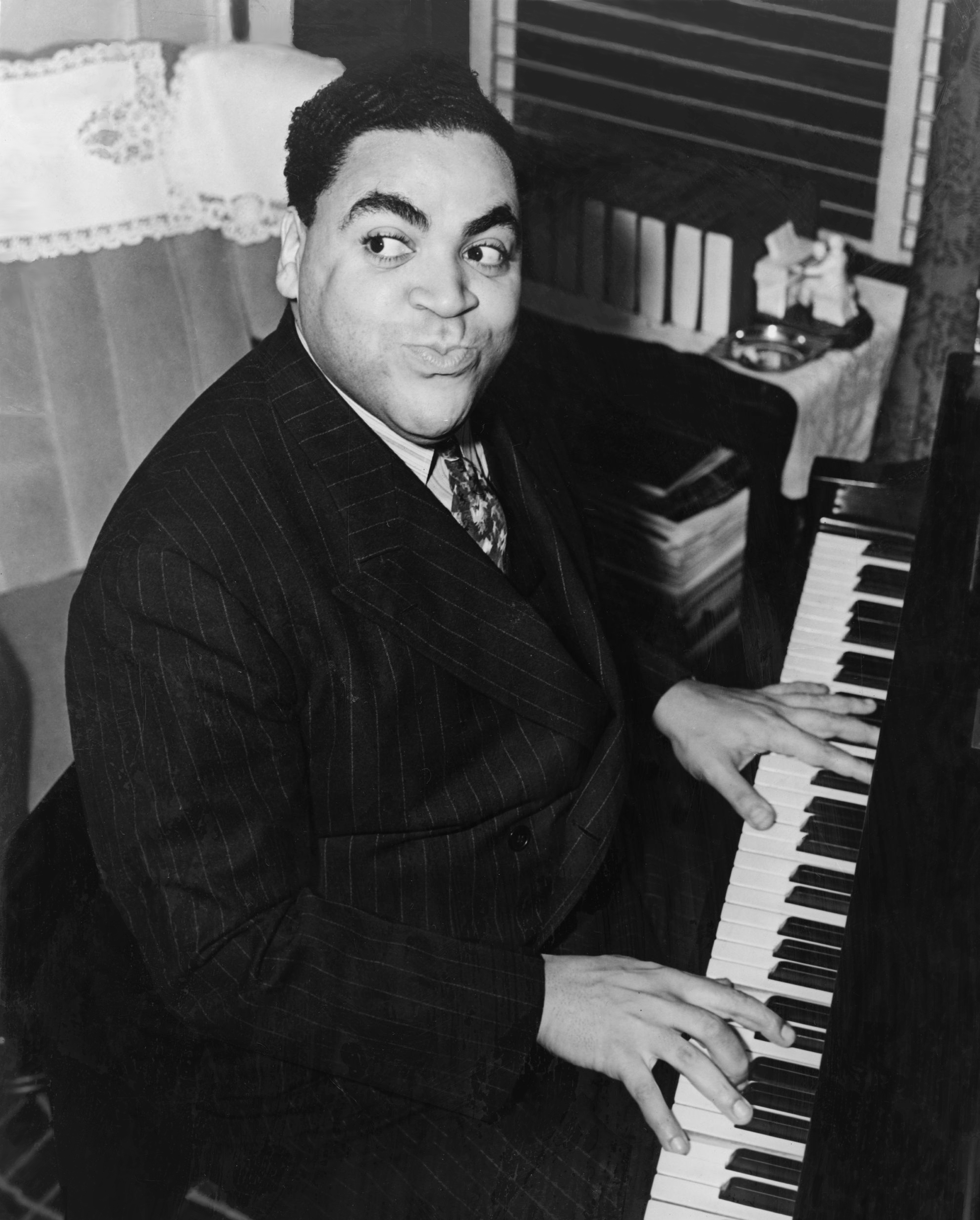|
Sophisticated Lady
"Sophisticated Lady" is a jazz standard, composed as an instrumental in 1932 by Duke Ellington. Background Additional credit is given to publisher Irving Mills whose words were added to the song by Mitchell Parish. The words met with approval from Ellington, who described them as "wonderful—but not entirely fitted to my original conception". That original conception was inspired by three of Ellington's grade school teachers. "They taught all winter and toured Europe in the summer. To me that spelled sophistication." Lawrence Brown, the trombone player in Ellington's band at the time, claimed that he was responsible for the main hook in the A section of the tune. Ellington paid him $15 for his contribution, but he was never officially credited. Duke Ellington and His Orchestra introduced "Sophisticated Lady" in 1933 with an instrumental recording of the song that featured solos by Toby Hardwick on alto sax, Barney Bigard on clarinet, Lawrence Brown on trombone and Ellington o ... [...More Info...] [...Related Items...] OR: [Wikipedia] [Google] [Baidu] |
Duke Ellington
Edward Kennedy "Duke" Ellington (April 29, 1899 – May 24, 1974) was an American jazz pianist, composer, and leader of his eponymous jazz orchestra from 1923 through the rest of his life. Born and raised in Washington, D.C., Ellington was based in New York City from the mid-1920s and gained a national profile through his orchestra's appearances at the Cotton Club in Harlem. A master at writing miniatures for the three-minute 78 rpm recording format, Ellington wrote or collaborated on more than one thousand compositions; his extensive body of work is the largest recorded personal jazz legacy, and many of his pieces have become standards. He also recorded songs written by his bandsmen, such as Juan Tizol's " Caravan", which brought a Spanish tinge to big band jazz. At the end of the 1930s, Ellington began a nearly thirty-year collaboration with composer-arranger-pianist Billy Strayhorn, whom he called his writing and arranging companion. With Strayhorn, he composed mu ... [...More Info...] [...Related Items...] OR: [Wikipedia] [Google] [Baidu] |
Kenton With Voices
''Kenton with Voices'' is an album by bandleader and pianist Stan Kenton featuring performances recorded in 1957 and released on the Capitol label.Vosbein, PStan Kenton Discographyaccessed April 16, 2016 accessed April 16, 2016 Reception The review by Lindsay Planer noted "The trademark brash and stylistic covers run the gamut from the robust and harmonically intense opener "Dancing in the Dark," to the equally complex structure of the hauntingly gorgeous "Sophisticated Lady." There is also a remake of the Kenton classic "Eager Beaver," which had been his first significant hit back in 1943. Particularly notable is the exhilar ...[...More Info...] [...Related Items...] OR: [Wikipedia] [Google] [Baidu] |
Toots Thielemans
Jean-Baptiste Frédéric Isidor, Baron Thielemans (29 April 1922 – 22 August 2016), known professionally as Toots Thielemans, was a Belgian jazz musician. He was mostly known for his chromatic harmonica playing, as well as his guitar and whistling skills, and composing. According to jazz historian Ted Gioia, his most important contribution was in "championing the humble harmonica", which Thielemans made into a "legitimate voice in jazz".Gioia, Ted. ''The History of Jazz'', Oxford Univ. Press (2011) p. 382 He eventually became the "preeminent" jazz harmonica player.Morton, Brian, and Cook, Richard. ''The Penguin Jazz Guide: the History of the Music in the 1000 Best Albums'', Penguin UK, (2010) ebook. His first professional performances were with Benny Goodman's band when they toured Europe in 1949 and 1950. He emigrated to the U.S. in 1951, becoming a citizen in 1957. From 1953 to 1959 he played with George Shearing, and then led his own groups on tours in the U.S. and Europe. ... [...More Info...] [...Related Items...] OR: [Wikipedia] [Google] [Baidu] |
Art Tatum
Arthur Tatum Jr. (, October 13, 1909 – November 5, 1956) was an American jazz pianist who is widely regarded as one of the greatest in his field. From early in his career, Tatum's technical ability was regarded by fellow musicians as extraordinary. Many pianists attempted to copy him; others questioned their own skills after encountering him, and some even switched instruments in response. In addition to being acclaimed for his virtuoso technique, Tatum extended the vocabulary and boundaries of jazz piano far beyond his initial stride influences, and established new ground in jazz through innovative use of reharmonization, voicing, and bitonality. Tatum grew up in Toledo, Ohio, where he began playing piano professionally and had his own radio program, rebroadcast nationwide, while still in his teens. He left Toledo in 1932 and had residencies as a solo pianist at clubs in major urban centers including New York, Chicago, and Los Angeles. In that decade, he settled into a pa ... [...More Info...] [...Related Items...] OR: [Wikipedia] [Google] [Baidu] |
Box Scaggs
A box (plural: boxes) is a container used for the storage or transportation of its contents. Most boxes have flat, parallel, rectangular sides. Boxes can be very small (like a matchbox) or very large (like a shipping box for furniture), and can be used for a variety of purposes from functional to decorative. Boxes may be made of a variety of materials, both durable, such as wood and metal; and non-durable, such as corrugated fiberboard and paperboard. Corrugated metal boxes are commonly used as shipping containers. Most commonly, boxes have flat, parallel, rectangular sides, making them rectangular prisms; but boxes may also have other shapes. Rectangular prisms are often referred to colloquially as "boxes." Boxes may be closed and shut with flaps, doors, or a separate lid. They can be secured shut with adhesives, tapes, or more decorative or elaborately functional mechanisms, such as a catch, clasp or lock. Types Packaging Several types of boxes are used in packaging and s ... [...More Info...] [...Related Items...] OR: [Wikipedia] [Google] [Baidu] |
Don Redman
Donald Matthew Redman (July 29, 1900 – November 30, 1964) was an American jazz musician, arranger, bandleader, and composer. Biography Redman was born in Piedmont, Mineral County, West Virginia, United States. His father was a music teacher, his mother was a singer. Beginning by playing the trumpet at the age of three, Redman joined his first band at the age of six and by the age of 12 was proficient on all wind instruments ranging from trumpet to oboe as well as piano. He studied at Storer College in Harper's Ferry and at the Boston Conservatory, then joined Billy Page's Broadway Syncopaters in New York City. He was the uncle of saxophonist Dewey Redman, and thus great-uncle of saxophonist Joshua Redman and trumpeter Carlos Redman. Career In 1923, Redman joined the Fletcher Henderson orchestra, mostly playing clarinet and saxophones. He began writing arrangements, and Redman did much to formulate the sound that was to become swing. A trademark of Redman's arrangem ... [...More Info...] [...Related Items...] OR: [Wikipedia] [Google] [Baidu] |
Spud Murphy
Miko Stefanovic (August 19, 1908 – August 5, 2005), better known as Lyle 'Spud' Murphy, was an American jazz multi-instrumentalist, bandleader, and arranger. Early life Born Miko Stefanovic to Serbian émigré parents in Berlin, Germany, Murphy grew up in Salt Lake City, Utah, where he took the name of a childhood friend. Music career Murphy studied clarinet and saxophone when young and took trumpet lessons from Red Nichols's father. He worked with Jimmy Joy in 1927–28 and with Ross Gorman and Slim Lamar (on oboe) in 1928. He worked in the early 1930s as saxophonist and arranger for Austin Wylie, Jan Garber, Mal Hallett, and Joe Haymes, then became a staff arranger for Benny Goodman from 1935–1937. At the same time he contributed arrangements for the Casa Loma Orchestra, Isham Jones, and Les Brown. From 1937–1940 Murphy led a big band, and from 1938–39 recorded for Decca Records and Bluebird Records. In the 1940s he moved to Los Angeles, where worked in studios and ... [...More Info...] [...Related Items...] OR: [Wikipedia] [Google] [Baidu] |
Thelonious Monk
Thelonious Sphere Monk (, October 10, 1917 – February 17, 1982) was an American jazz pianist and composer. He had a unique improvisational style and made numerous contributions to the standard jazz repertoire, including " 'Round Midnight", " Blue Monk", " Straight, No Chaser", " Ruby, My Dear", "In Walked Bud", and "Well, You Needn't". Monk is the second-most-recorded jazz composer after Duke Ellington. Monk's compositions and improvisations feature dissonances and angular melodic twists and are consistent with his unorthodox approach to the piano, which combined a highly percussive attack with abrupt, dramatic use of switched key releases, silences, and hesitations. Monk's distinct look included suits, hats, and sunglasses. He also had an idiosyncratic habit during performances: while other musicians continued playing, Monk would stop, stand up, and dance for a few moments before returning to the piano. Monk is one of five jazz musicians to have been featured on the cov ... [...More Info...] [...Related Items...] OR: [Wikipedia] [Google] [Baidu] |
Charles Mingus
Charles Mingus Jr. (April 22, 1922 – January 5, 1979) was an American jazz upright bassist, pianist, composer, bandleader, and author. A major proponent of collective improvisation, he is considered to be one of the greatest jazz musicians and composers in history,See the 1998 documentary ''Triumph of the Underdog'' with a career spanning three decades and collaborations with other jazz musicians such as Louis Armstrong, Duke Ellington, Charlie Parker, Dizzy Gillespie, and Herbie Hancock. Mingus' compositions continue to be played by contemporary musicians ranging from the repertory bands Mingus Big Band, Mingus Dynasty, and Mingus Orchestra, to the high school students who play the charts and compete in the Charles Mingus High School Competition. In 1993, the Library of Congress acquired Mingus' collected papers—including scores, sound recordings, correspondence and photos—in what they described as "the most important acquisition of a manuscript collection relating t ... [...More Info...] [...Related Items...] OR: [Wikipedia] [Google] [Baidu] |
The Duets (Mulgrew Miller Album)
''The Duets'' is a studio album by American jazz pianist Mulgrew Miller and Danish bassist Niels-Henning Ørsted Pedersen. The album was recorded in Copenhagen on the Bang & Olufsen label and released in 1999. The record features famous compositions by pianist Duke Ellington as well as two originals by bandmembers. Their duo later became a trio with the occasional inclusion of drummer Alvin Queen in 2000. Background In 1999–2000, Pedersen had the opportunity to make a studio recording to celebrate Duke Ellington's 100th birthday. The session was initially planned as a piano-and-bass duo, so NHØP chose Miller, whom he had never played with before. From that occasion on, they played together and had an affinity both as men and musicians. They opted for a repertoire based on the historic 1941 Duke Ellington–Jimmy Blanton James Blanton (October 5, 1918 – July 30, 1942) was an American jazz double bassist. Blanton is credited with being the originator of more complex pizzica ... [...More Info...] [...Related Items...] OR: [Wikipedia] [Google] [Baidu] |
Niels-Henning Ørsted Pedersen
Niels-Henning Ørsted Pedersen (, 27 May 1946 – 19 April 2005), also known by his abbreviated nickname NHØP, was a Danish jazz double bassist. Biography Pedersen was born in Osted, near Roskilde, on the Danish island of Zealand, the son of a church organist. As a child, Ørsted Pedersen played piano, but from the age of 13, he started learning to play upright bass and at the age of 14, while studying, he began his professional jazz career in Denmark with his first band, Jazzkvintet 60 (Danish for Jazz Quintet 60). By the age of fifteen, he had the ability to accompany leading musicians at nightclubs, working regularly at Copenhagen's Jazzhus Montmartre, after his debut there on New Year's Eve 1961, when he was only 15. When seventeen, he had already turned down an offer to join the Count Basie orchestra, mainly because he was too young to get legal permission to live and work as a musician in the United States. The Montmartre was a regular stop-off for touring American Jazz ... [...More Info...] [...Related Items...] OR: [Wikipedia] [Google] [Baidu] |



.jpg)
